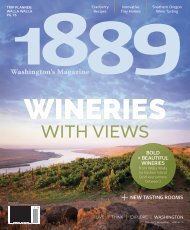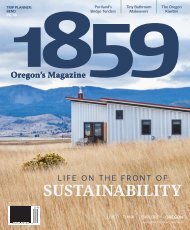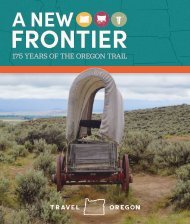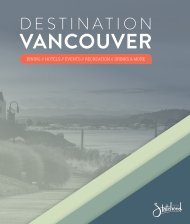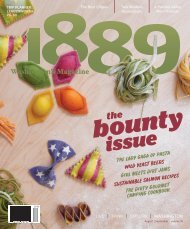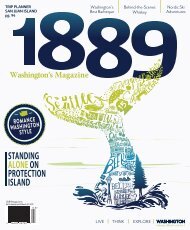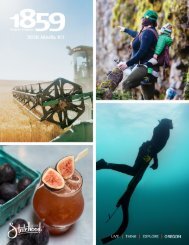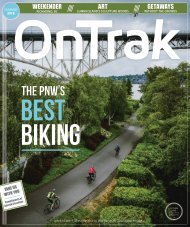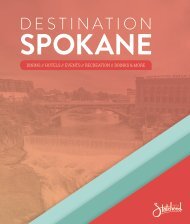Create successful ePaper yourself
Turn your PDF publications into a flip-book with our unique Google optimized e-Paper software.
DAY ONE:<br />
THE HEADWATERS<br />
At the Source<br />
It’s <strong>Oct</strong>ober on the western flanks of the<br />
Oregon Coast Range, and the water cycle is<br />
firing up in a big way. Moisture lifts from the<br />
Pacific in great draughts, and storm clouds<br />
pile up against conifer forests. They dump<br />
their liquid cargo by the millions of gallons—<br />
the source of all life falls from the skies.<br />
After three attempts by both car and foot<br />
at forging up a web of old logging roads, twice<br />
blocked by late snows, we reach the side of<br />
Saddle Bag Mountain. We stumble out of<br />
dark forests into a meadow to find a crystal<br />
clear spring emerging from the ground and<br />
gurgling at our feet. After twelve long months<br />
of planning, we have found the elusive headwaters<br />
of the Salmon River.<br />
Lost Prairie<br />
The mythical oasis of Lost Prairie comes<br />
into view as we make our way downstream.<br />
Named by the first loggers to penetrate<br />
into this wilderness in the early 1900s, it is<br />
Hollywood’s version of a headwaters. Old<br />
growth trees ring cerulean blue pools. The<br />
Lost Prairie cradles a dizzying array of species<br />
that inhabit the grasslands, skies and<br />
waterways.<br />
Starting at an elevation of 2,500 feet,<br />
these waters will take less than twenty-four<br />
hours to make their thirty-mile gravitational<br />
journey west to the sea. In passing, this river<br />
will sustain living creatures in its watershed,<br />
while simultaneously wearing down the<br />
mountains as fast as the inner workings of<br />
the earth can push them back up.<br />
Clear Cuts<br />
We pass remnants of what was once<br />
Oregon’s towering coastal temperate<br />
rain forest in the form of crumbling<br />
old growth stumps that are six to eight<br />
feet across. On all sides, as far as the<br />
eye can see, is a patchwork of second-<br />
and third-generation clear-cuts,<br />
essentially a giant topographical tree<br />
farm whose “crop” is harvested every<br />
thirty-five years or so to feed our appetite<br />
for new homes, paper and other<br />
useful by-products.<br />
<strong>1859</strong> oregon's mAgAzine SEPT OCT <strong>2012</strong>




